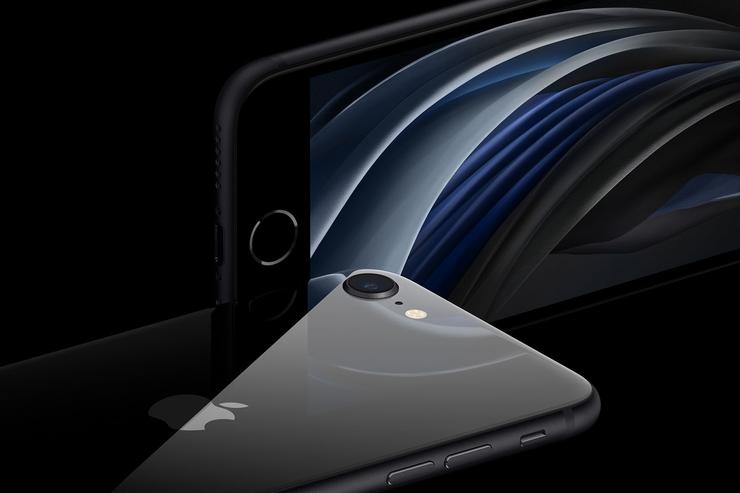
Telstra Tough Max 3 review: A durable daily-driver
Pros
- Great battery life
- Incredible durability
Cons
- Inconsistent camera
- Bland software
Bottom Line
Telstra's Tough Max 3 provides both functionality and durability aplenty.
-
Price
$ 499.00 (AUD)
Should You Buy The Telstra Tough 3?
If you’re the kind of person who doesn’t buy into smartphone hype at all and wants a device that can withstand the tough conditions of a worksite or a penchant for clumsiness, the Tough Max 3 provides both functionality and durability aplenty.
Telstra’s Tough Max 3 won’t look pretty and it doesn’t have much in the way of special or unique features, but it is more than capable getting the job done.
For more about our smartphone review process, click here.
Price when reviewed
In Australia, the RRP of the Telstra Tough Max 3 is AU$499.
Telstra Tough Max 3 (2020) full review
If you’re happy to settle for the necessities, the added protection that the Telstra Tough Max 3 brings to table is gonna seem like a pretty good deal. Pulling from a palette that matches Telstra’s own iconography, the Tough Max 3 feels like it’s been built to take a hit.
There’s a sense of essentialism here, with the Tough Max 3 packing in a lot of modern conveniences. Sure, you won’t find a triple-lens with 100x zoom or wireless charging or a 120Hz display. You will find a headphone jack, microSD slot, USB-C charging, dual-speakers, a fingerprint sensor and even an external antenna port.
 Credit: Fergus Halliday
Credit: Fergus Halliday Under the hood, the Tough Max 3 runs on a Snapdragon 665 processor and 4GB of RAM. On the back, the phone rocks a humble dual-lens camera to the sum of 16-megapixels and 5-megapixels.
After a week or so of using the Telstra Tough Max 3 as my daily-driver, I actually came to admire the unique balance it finds between durability and the rest of its design. It does feel bigger in your pocket than a flagship might be it still feels world thinner than any device wearing the kind of bulky protective cases you’d usually have to invest in for this degree of extra protection.
Price
In Australia, you can buy the Telstra Tough Max 3 for $499 through Telstra. You can also buy it on a plan using the widget below:
Design - Look, Feel, Features and Camera
A stark contrast to the sleek, luxury-grade aesthetics of something like an iPhone or a Galaxy S20, Telstra’s house-brand smartphone comes across as bulky and brusque. A brute-force solution to the problem of building a phone that’s difficult to break.
 Credit: Fergus Halliday
Credit: Fergus Halliday Pulling from a color palette that matches Telstra’s own corporate iconography, the Tough Max 3 feels like it’s been designed to take a hit. From the moment you cradle it in your hands, the rubberized sides and sturdy plastic back inspire and enshrine a unique sort of confidence. It doesn’t have that much more heft than a normal smartphone but it does feel robust in a way that sets it apart from ordinary consumers options.
At it’s best, the Tough Max 3 sells you on the idea that it’s a phone that you can drop without worry or concern. Putting that to the test, we scratched, scraped, dropped and even dragged nails across it. The device racked up scars pretty quick but, to its credit, it remained entirely functional.
Less minimalist, more essentialist. The Tough Max 3 packs in most of the modern conveniences you’d expect. You won’t find a triple-lens camera with 100x zoom, wireless charging or a 120Hz display. You will find a headphone jack, microSD slot, USB-C charging, dual-speakers, a fingerprint sensor and even an external antenna port.
The back of the Tough Max 3 touts a dual-lens camera to the sum of 16-megapixels and 5-megapixels.
This setup is pretty barebones overall. It works but it’s not particularly responsive. Often-times, I would snap a quick photo and put my phone away - only to discover later that I had acted too hastily and was now stuck with a bunch of blurry messes.
 Credit: Fergus Halliday
Credit: Fergus Halliday  Credit: Fergus Halliday
Credit: Fergus Halliday Zoom performance was adequate but unexceptional. However, low-light is where the difference between this and competing devices from Oppo, Samsung and Google is really felt.
 Credit: Fergus Halliday
Credit: Fergus Halliday For more on how dual-lens cameras work, click here.
 Credit: Fergus Halliday
Credit: Fergus Halliday  Credit: Fergus Halliday
Credit: Fergus Halliday Regardless, after a week or so of using the Telstra Tough Max 3 as my daily-driver, I actually came to admire the unique balance it finds between durability and the rest of its design. It does feel bigger in your pocket than a flagship might be it still feels world thinner than any device wearing a bulky protective case. Importantly, those added protections don’t feel like they come at a major cost to performance.
The Telstra Tough Max 3 strives to live up to the stereotype of what a rugged phone ought to be and then some. The camera could be better but the actual experience of using this as I would any other Android phone surprised me in just how decent it was.
Performance - Specs, Software, Benchmarks and Battery Life
Specs
Processor: Snapdragon 665
Operating System: Android 9
RAM: 4GB
Storage: 64GB
MicroSD slot: Yes
Headphone Jack: Yes
Fingerprint sensor: Yes
SIM: Single
Battery: 3920mAh
Connectivity: Bluetooth, NFC, Wi-Fi, 4G
Rear Camera: 16-megapixel (AF with Flash) + 5-megapixel
Front-Facing Camera: 8-megapixel
Dimensions: 157.8 × 77.2 × 11.6 mm
Weight: 185g
Software
The software on the Telstra Tough Max 3 is fairly stock Android. The device does come with a handful of Telstra app pre installed but otherwise, there’s no bloatware to speak of. Nor are there any unique software features. There are no surprises here. What you see is what you get.
 Credit: Fergus Halliday
Credit: Fergus Halliday In action, the Snapdragon 665 inside the Tough Max 3 chugged from time to time and apps often unexpectedly closed in the background but the device acquitted itself well to my daily usage of checking my email, scrolling through Twitter and watching Overwatch League at the gym or on the train. It even handled the Android version of Riot’s TeamFight Tactics surprisingly well.
Overall, the software experience offered by the Telstra Tough Max 3 is a little bland and nowhere near as snappy as what an 800-series processor (or any of its contemporaries) gets you but neither does it feel all that compromised.
Benchmarks
 Credit: Fergus Halliday
Credit: Fergus Halliday Read more: Optus vs Telstra: Who has the best Galaxy S20 plans?
PCMark (Work 2.0): 6303
3DMark SlingShot Extreme (OpenGL): 1111
3DMark SlingShot Extreme (Vulkan): 1032
Geekbench CPU (Single Core): 313
Geekbench CPU (Multi Core): 1357
Geekbench Compute: 367
Battery Life
When it came to battery life, the Telstra Tough Max 3’s 3920mAh battery did not disappoint. We managed to get around one and a half to two days of regular usage out of a single charge.
There’s a charm in the way the Telstra Tough Max 3 so earnestly subscribes to the idea that if your smartphone isn’t going to be high performance, it should be long-lasting.
For better or worse, the Telstra Tough Max 3 does not natively support wireless charging.
The Bottom Line
In form and function, the Tough Max 3 can be best summarized as a device that gets the job done. Filling the niche in the market for those who don’t care that much about the quality of their phone experience but want something that they’re unlikely to break, Telstra’ housebrand is more than just an expensive paperweight. It’s a genuine option worth considering.
You might have to settle for the necessities, but the added protection that the Tough Max 3 offers is going to make that barebones setup seem like a pretty good deal.
 Credit: Fergus Halliday
Credit: Fergus Halliday Not sold? Check out our round-up of the best Android and Apple smartphones you can find for under $500.
Brand Post

Most Popular Reviews
- 1 Dell U3223QE review: A winning debut for an IPS Black monitor
- 2 HP Spectre x360 16 review: The right 2-in-1 at the wrong time
- 3 Acer K242HYL review: An affordable monitor for any occasion
- 4 GeForce Now review: You bring the games, Nvidia streams the hardware
- 5 Asus ProArt PA279CV monitor review: The go-to for content creators on a budget
Latest News Articles
- Bizarre iOS bug swaps out Spotify for Apple Music in the iPhone dock
- Fortnite returns to the iPhone (sort of) courtesy Xbox Cloud Gaming
- Want to go watch the WWDC keynote at Apple Park? Here’s how to apply
- iPad buying guide 2022
- Apple to support ‘passwordless’ iPhone logins on Android phones and PCs
Resources
Macworld
What's new, plus best mac-related tips
and tricks

Business Centre
The latest business news, reviews, features and whitepapers

Videos
Watch our video news and reviews from around the world

Guides
Comprehensive buying guides, features, and step-by-step articles

PCW Evaluation Team
Pedro Peixoto
Aruba Instant On AP11D

Set up is effortless.
Cate Bacon
Aruba Instant On AP11D

The strength of the Aruba Instant On AP11D is that the design and feature set support the modern, flexible, and mobile way of working.
Dr Prabigya Shiwakoti
Aruba Instant On AP11D

Aruba backs the AP11D up with a two-year warranty and 24/7 phone support.
Tom Pope
Dynabook Portégé X30L-G

Ultimately this laptop has achieved everything I would hope for in a laptop for work, while fitting that into a form factor and weight that is remarkable.
Tom Sellers
MSI P65

This smart laptop was enjoyable to use and great to work on – creating content was super simple.
Lolita Wang
MSI GT76

It really doesn’t get more “gaming laptop” than this.
Featured Content
- Which Lenovo Laptop Should I Buy?
- Every TV in Samsung's 2022 line-up: OLED, Neo QLED and more!
- Top 10 best Android and Apple phones for under $600
- Everything you need to know about Smart TVs
- What's the difference between an Intel Core i3, i5 and i7?
- Laser vs. inkjet printers: which is better?









